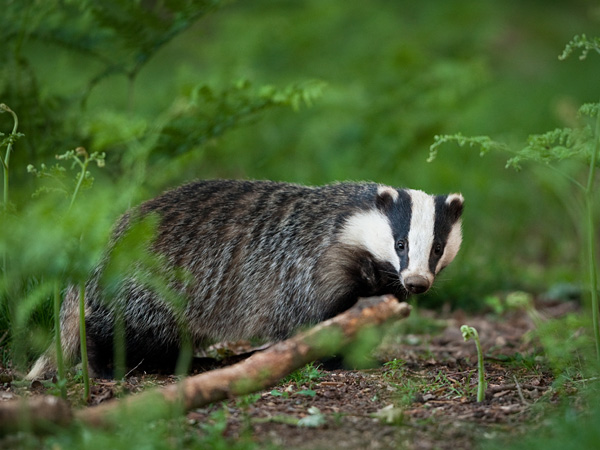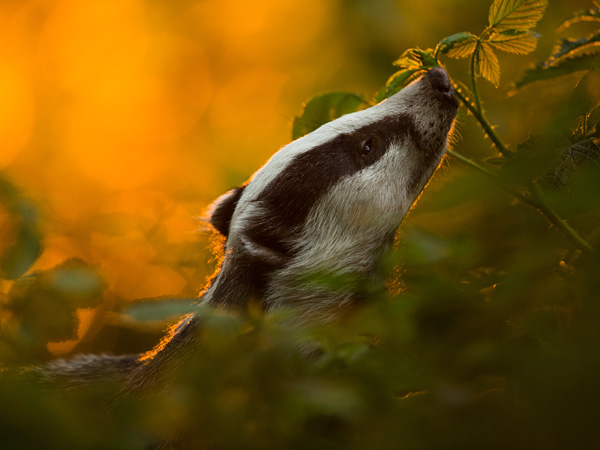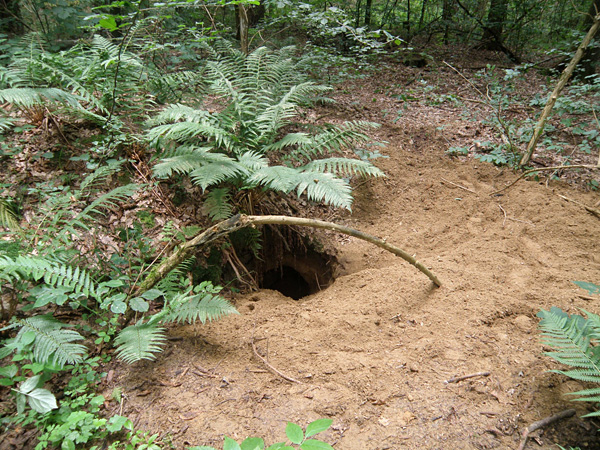European badger – an underrated ecosystem engineer
Animals, through trophic and non-trophic interactions and the way they shape the abiotic environment, affect plants – their growth, mortality, dispersal, etc. It is therefore not unusual for a botanist to study animal ecology. Such research has been undertaken at our Institute for years, recently focusing especially on the European badger Meles meles L.
The badger is the largest representative of the Mustelidae family in Poland. It occurs throughout the country. It lives mainly in forests, from pine forests to fertile oak-hornbeam forests and mountain spruce forests, but it can also be found in field groves and in suburban areas. An attribute of the badger is the ability to build extensive and complex burrow systems with many entrances, corridors and chambers. They have multiple functions: they are places of day shelter (the badger leads a nocturnal lifestyle), wintering and raising offspring. By digging burrows, the badger creates new microhabitats characterized by a lack of litter, or even the entire organic layer, disturbed soil profile and varied micro-relief (soil from deeper horizons is taken to the surface and piled into mounds). These microhabitats offer conditions for the development of other plant species than those occurring in undisturbed parts of the forest. The species composition of vegetation in burrows is also different due to the endozoochoric dispersal of trees and shrubs, the fruit of which is part of the badger's diet.
The latest review published in Animals, co-authored by scientists from our Institute (Łukasz Piechnik and Barbara Seget), shows the European badger as an ecosystem engineer, whose presence in forests can significantly increase their biodiversity and natural values. The authors not only summarize the current knowledge about the role of the badger in the forest ecosystem, but also review its legal status in 41 European countries. This status turns out to be very different – from strict protection (17 countries), where the species is listed in the Red Book, to no protection (24 countries), where the species is on the list of game species, with different lengths of the legal hunting period. According to the authors, it is necessary to consider increasing the level of badger protection (mainly by limiting the hunting intensity) in order to use the full potential of this species in the rewilding of ecosystems transformed and/or used by man.
See the original article:
Kurek P., Piechnik Ł., Wiatrowska B., Ważna A., Nowakowski K., Pardavila X., Cichocki J., Seget B. 2022. Badger Meles meles as ecosystem engineer and its legal status in Europe. Animals 12: 898. DOI

European badger (Meles meles).
Photo: Damian Kuzdak.

European badger (Meles meles).
Photo: Damian Kuzdak.

Wejście do nory borsuka.
Photo: Blanka Wiatrowska.






